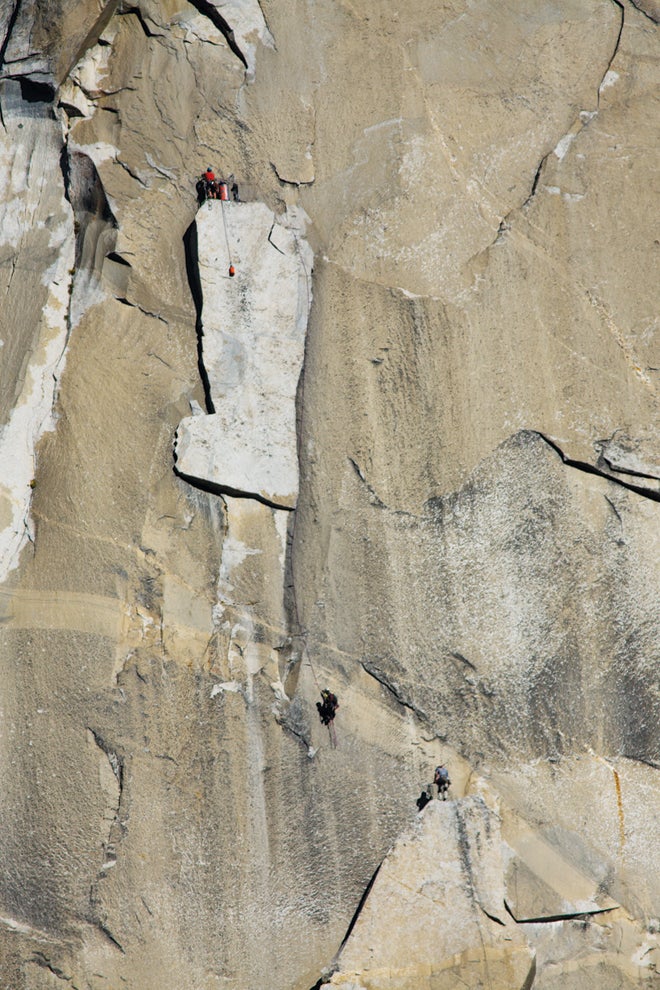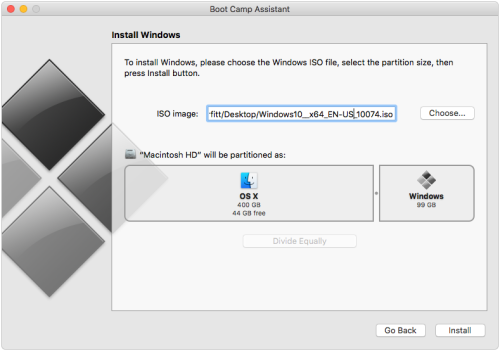Upgrading to El Capitan
- El Capitan Bootable Installer
- El Capitan Bootable Usb
- El Capitan Boot Usb
- El Capitan Bootable Installer
- El Capitan Boot Camp Windows 10
- Download Bootable El Capitan
- El Capitan Boot Install
You can upgrade to El Capitan from Lion or directly from Snow Leopard. El Capitan can be downloaded from the Mac App Store for FREE.
- Mac OS X El Capitan ISO – Download Mac OS El Capitan ISO Setup Files Free: The MacBook and the Apple’s Mac are the second most widely used and famous portable Computers. The first place is occupied by the Family of Windows Computers, this is due to their cheaper prices, and ease of access.
- I created a USB disk with a bootable El Capitan as per this documentation. Plug-in your USB key on a turned-off computer. Start your Mac, press immediately OPTION (aka ALT) Select the Orange icon (aka a USB stick) labelled El Capitan. If it does not detect it after 10 sec and you only see your hard-drive. Try another USB port and wait 10 sec again.
Create Bootable USB for Mac OS X El Capitan with TransMac. How To Create Bootable Usb For Os X El Capitan Download. A new pop up box will appear, click on the three-dots, and then select the macOS X El Capitan.DMG file from Windows. Then click on OK. Since the file is huge so it will take quite time to complete. Anydesk free download for.
Upgrading to El Capitan
To upgrade to El Capitan you must have Snow Leopard 10.6.8 or Lion installed. Download El Capitan from the App Store. Sign in using your Apple ID. El Capitan is free. The file is quite large, over 5 GBs, so allow some time to download. It would be preferable to use Ethernet because it is nearly four times faster than wireless.
Macs that can be upgraded to OS X El Capitan

1. iMac (Mid 2007 or newer) - Model Identifier 7,1 or later
2. MacBook (Late 2008 Aluminum, or Early 2009 or newer) - Model Identifier 5,1 or later
3. MacBook Pro (Mid/Late 2007 or newer) - Model Identifier 3,1 or later
4. MacBook Air (Late 2008 or newer) - Model Identifier 2,1 or later
5. Mac mini (Early 2009 or newer) - Model Identifier 3,1 or later
6. Mac Pro (Early 2008 or newer) - Model Identifier 3,1 or later
7. Xserve (Early 2009) - Model Identifier 3,1 or later
To find the model identifier open System Profiler in the Utilities folder. It's displayed in the panel on the right.
Are my applications compatible?
See App Compatibility Table - RoaringApps
Note that upgrading to El Capitan is quite possible from Snow Leopard.l Please be sure your model is included in the above and that your computer meets the installation requirements.

If you need to reinstall El Capitan then try:
Reinstall El Capitan Without Erasing the Drive

Boot to the Recovery HD: Restart the computer and after the chime press and hold down the COMMAND and R keys until the menu screen appears.
Repair the Hard Drive and Permissions: Upon startup select Disk Utility from the main menu. Repair the Hard Drive and Permissions as follows.
When the recovery menu appears select Disk Utility and press the Continue button. After Disk Utility loads select the indented Macintosh HD entry from the the left side list. Click on the First Aid button in the toolbar. Wait until the operation completes, then quit Disk Utility and return to the main menu.
Reinstall OS X: Select Reinstall OS X and click on the Continue button.
Note: You will need an active Internet connection. I suggest using Ethernet if possible because it is three times faster than wireless and more reliable.
El Capitan Bootable Installer
If you cannot do the above, then you need to reinstall Snow Leopard and try again:
Reinstall OS X without erasing the drive

1. Repair the Hard Drive and Permissions
Boot from your Snow Leopard Installer disc. After the installer loads select your language and click on the Continue button. When the menu bar appears select Disk Utility from the Utilities menu. After DU loads select your hard drive entry (mfgr.'s ID and drive size) from the the left side list. In the DU status area you will see an entry for the S.M.A.R.T. status of the hard drive. If it does not say 'Verified' then the hard drive is failing or failed. (SMART status is not reported on external Firewire or USB drives.) If the drive is 'Verified' then select your OS X volume from the list on the left (sub-entry below the drive entry,) click on the First Aid tab, then click on the Repair Disk button. If DU reports any errors that have been fixed, then re-run Repair Disk until no errors are reported. If no errors are reported click on the Repair Permissions button. Wait until the operation completes, then quit DU and return to the installer.
If DU reports errors it cannot fix, then you will need Disk Warrior and/or Tech Tool Pro to repair the drive. If you don't have either of them or if neither of them can fix the drive, then you will need to reformat the drive and reinstall OS X.
2. Reinstall Snow Leopard
If the drive is OK then quit DU and return to the installer. Proceed with reinstalling OS X. Note that the Snow Leopard installer will not erase your drive or disturb your files. After installing a fresh copy of OS X the installer will move your Home folder, third-party applications, support items, and network preferences into the newly installed system.
Download and install Mac OS X 10.6.8 Update Combo v1.1.
El Capitan Bootable Usb
Jan 19, 2016 2:20 PM
Create a bootable USB drive for macOS X versions including El Capitan, Yosemite, Mavericks, Sierra, High Sierra, and Mojave.
Sep 30, 2015 An 8GB or larger USB Flash Drive like these, this will be formatted and turn into the OS X El Capitan bootable installer; The OS X El Capitan installer application must be on the Mac and in the /Applications/ folder, download OS X El Capitan here if you haven’t done so yet (yes. You can re-download it). Therefore, you can create bootable USB for your Mac using Transmac on windows 10/7/8/8.1 here you will learn the easiest method of creating bootable USB. As you know that Mac OS EL Capitan is the newest version among Mac. In here just follow my steps to create a bootable USB installer for your Mac. Is the twelfth major of the Mac operating system. Jun 11, 2015 An 8GB or larger USB Flash Drive, this will be formatted and turn into the OS X El Capitan bootable installer; The OS X El Capitan installer application, this can be downloaded from Apple (either as Public Beta or Developer Beta, or preferably the GM Candidate) Naturally, you’ll also need a OS X 10.11 compatible Mac for the destination.
It was 2009 when Apple last released a new operating system on physical media. Things have proceeded remarkably smoothly since version 10.7 switched to download-only installers, but there are still good reasons to want an old, reliable USB stick. For instance, if you find yourself doing multiple installs, a USB drive may be faster than multiple downloads (especially if you use a USB 3.0 drive). Or maybe you need a recovery disk for older Macs that don't support the Internet Recovery feature. Whatever the reason, you're in luck, because it's not hard to make one.
As with last year, there are two ways to get it done. There's the super easy way with the graphical user interface and the only slightly less easy way that requires some light Terminal use. Here's what you need to get started.
El Capitan Boot Usb
- A Mac that you have administrator access to, duh. We've created El Capitan USB stick from both Yosemite and El Capitan, but your experience with other versions may vary.
- An 8GB or larger USB flash drive or an 8GB or larger partition on some other kind of external drive. For newer Macs, use a USB 3.0 drive—it makes things significantly faster.
- The OS X 10.11 El Capitan installer from the Mac App Store in your Applications folder. The installer will delete itself when you install the operating system, but it can be re-downloaded if necessary.
- If you want a GUI, you need the latest version of Diskmaker X app. Version 5 is the one with official El Capitan support.
- Diskmaker X is free to download, but the creator accepts donations if you want to support his efforts.
How To Make A Usb Boot For El Capitan Boot
The easy way
Once you've obtained all of the necessary materials, connect the USB drive to your Mac and run the Diskmaker X app. The app will offer to make installers for OS X 10.9, 10.10, and 10.11, and it should run on OS X versions all the way back to 10.7—support for 10.6 was dropped in the most recent release.
El Capitan Bootable Installer
Diskmaker X has actually been around since the days of OS X 10.7 (it was previously known as Lion Diskmaker), and it's still the easiest GUI-based way to go without intimidating newbies. If you're comfortable with the command line, it's still possible to create a disk manually using a Terminal command, which we'll cover momentarily.
/OSX-elcap-clean-install-0a1424d6a19240cf811646c9925969b4.jpg)
Select OS X 10.11 in Diskmaker X, and the app should automatically find the copy you've downloaded to your Applications folder. It will then ask you where you want to copy the files—click 'An 8GB USB thumb drive' if you have a single drive to use or 'Another kind of disk' to use a partition on a larger drive or some other kind of external drive. Choose your disk (or partition) from the list that appears, verify that you'd like to have the disk (or partition) erased, and then wait for the files to copy over. The process is outlined in screenshots above.
The only slightly less-easy way
If you don't want to use Diskmaker X, Apple has actually included a terminal command that can create an install disk for you. /ms-office-2019-for-mac-catalina/. Assuming that you have the OS X El Capitan installer in your Applications folder and you have a Mac OS X Extended (Journaled)-formatted USB drive named 'Untitled' mounted on the system, you can create an El Capitan install drive by typing the following command into the Terminal.
sudo /Applications/Install OS X El Capitan.app/Contents/Resources/createinstallmedia --volume /Volumes/Untitled --applicationpath /Applications/Install OS X El Capitan.app --nointeraction
How To Make A Bootable Usb For Mac El Capitan
El Capitan Boot Camp Windows 10
The command will erase the disk and copy the install files over. Give it some time, and your volume will soon be loaded up with not just the OS X installer but also an external recovery partition that may come in handy if your hard drive dies and you're away from an Internet connection.
Download Bootable El Capitan
Make El Capitan Usb Installer
El Capitan Boot Install
Whichever method you use, you should be able to boot from your new USB drive either by changing the default Startup Disk in System Preferences or by holding down the Option key at boot and selecting the drive. Once booted, you'll be able to install or upgrade El Capitan as you normally would.